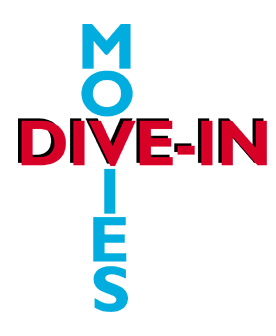The NCAA News - News and Features
The NCAA News -- November 23, 1998

Division III divers are splashing into championships through videotape
BY HEATHER YOST
STAFF WRITER
In the best of all worlds, Division III divers would have an NCAA prequalifying meet, allowing head-to-head competition in one pool on one day to decide each of the 22 spots for the Division III Men's and Women's Swimming and Diving Championships.
But that world isn't available, so Division III has implemented what it believes to be the next best thing: a new prequalifying system that incorporates scores and videotaped dives.
The Division III Championships Committee decided in August 1997 to eliminate the prequalifying event, beginning with the 1998 championships, because it wanted to follow its philosophy of fully funding the championships. The prequalifying event fell outside the fully funded philosophy because if a diver competed but was not selected to the championships field, the bill fell to the school. Thus, the committee charged the Division III Men's and Women's Swimming and Diving Committee with finding a new method of selecting title contenders from the at-large qualifiers field.
"The challenge for us was really two-fold," said Robert L. Kent of Kalamazoo College, chair of the Division III swimming and diving committee. "We needed to find a way to select the top divers for the championship, and we had to find a way to do it that would appeal to the coaches who believed the only fair way was head-to-head competition."
Videos as alternative
Mandy Hixon of Amherst College, a diving representative on the committee, spearheaded an effort to determine how to go beyond the scores to choose the top 22 divers nationally.
"Diving is subjective," Hixon said. "It is hard to judge how a score in California is going to compare to a score in New England. I knew that we had to find a way to go beyond the scoresheets and have some secondary way to verify we were picking the top divers."
Video seemed to be the best answer, although it was met with some opposition from the beginning.
"Until September of last year, the NCAA was against the use of the videos," Hixon said. "I think once they knew how regularly diving coaches use video, the reservations were gone. It was a lot better than guessing on the diversity of judges in different regions."
After approving the secondary use of videotaped performance, the system was finalized to include dual-meet diving compilation/entry forms, two best dual-meet scoresheets and conference or end-of-the-year-meet scoresheet, along with a videotape of the diver's performance in a bona fide competition.
"Diving coaches use videotapes all the time because diving is so quick," Hixon said. "It is a good way for us to slow down the process to evaluate the dives. It really improves your coaching."
Since videotaping performances was routine for diving coaches, the committee was not worried about the quality of cinematography detracting from the performance of the divers.
"Some of the tapes were better than others, but we could see what we were after," Kent said. "We could verify the scores, which was really the point."
The videotapes were supposed to include end-of-year performances or conference championship dives. The objective was to identify prequalifying-event caliber performances.
The divers remained anonymous throughout the process as Hixon assigned each applicant a number and spliced the videotapes together to correspond with the scoresheets. Hixon asked each of the five members of the selection committee to view the tape and review scoresheets before a selection conference call.
"I know all of us did it a little differently, but I went ahead and looked at the scoresheets first," Kent said. "I looked at the scoresheets and ranked the divers one through 22. Then I put the tape in and took a look at the divers, and then I jockeyed them around. It was helpful to see the diver."
Aided in selection
The three-and-one-half hour conference call allowed for the selection committee to review the order in which each person had placed the divers. The process was aided by Hixon's efforts to arrange the divers by number on one tape and provide counter numbers to help committee members find the diver in question and facilitate quick referencing during the call.
"The top 12 divers were pretty simple," Hixon said. "I think there was a pretty general consensus. Choosing the next 10 was hard, but it is hard to judge when you are at a meet, too. We all had to agree that each diver belonged in the meet. Since we had committee members from each region, we had additional background information about 95 percent of the divers who were on the tape, which also helped."
The results of the conference call selections were made available with the swimming qualifiers over fax-on-demand.
Feedback of the newly implemented system has been positive.
"The coaches at the NCAA championships seemed to be happy," Hixon said. "I didn't hear any complaints, but then their divers were selected. I haven't heard anything else."
Evaluating whether the selection committee managed to select the top 22 participants is impossible to judge and further complicated by the high turnover of top women divers last year. At the 1997 Division III women's championships, 10 of the top 16 divers were seniors, and the level of competition was expected to drop because of high turnover.
Hixon believes that the process could be refined by the use of video teleconferencing where one person could control the video system from his or her computer to save time and any possible confusion. For now, though, the system will remain in place for the 1999 championships without revision.
"I felt like our process was incredibly fair," Hixon said. "I wish we could have a zone meet or a prequalifying meet, but beyond that, this is as fair as we can be."
|